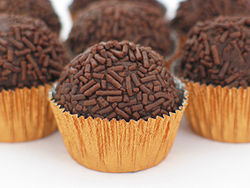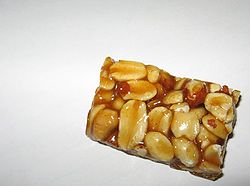 |
| Part of a series on |
| Brazilian cuisine |
|---|
| Types of food |
| See also |
Below is a list of sweets and desserts found in Brazilian cuisine. Brazilian cuisine, influenced by European, African and Amerindian traditions, [1] varies significantly by region, reflecting the country's diverse native and immigrant populations and its continental size. This has created a national cuisine that preserves regional differences. [2]











